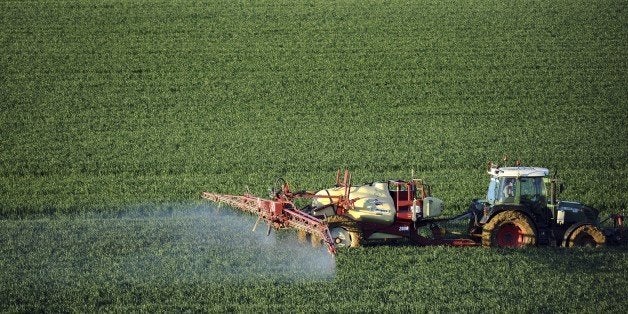
The Millennium Development Goals aimed to ease some of the symptoms of global poverty. Now is the time to tackle the causes. The UN's proposed Sustainable Development Goals (SDGs) are an unprecedented opportunity to reform the structures and power dynamics that keep people in poverty, particularly in the area of trade.
Goal 12 -- "ensure sustainable consumption and production patterns" -- sounds obvious, but its inclusion recognizes just how unbalanced production and consumption have become. Two billion people depend on agriculture for a living, but still half the world's hungry are farmers. Our food system is badly out of balance: consumers in richer countries expect ever cheaper food, yet we throw away one-third of all the food we buy. The connection between value and price has been broken -- in the U.K., we pay less for our food than ever before. There are more than 700 million malnourished people in the world, but now they are outnumbered by the obese. There is widespread use of agro-chemicals with little thought to the future ecosystem. What can be done to turn this around?
For more than 25 years, the Fairtrade movement has sought to address these challenges in the belief that trade -- if done differently -- can reduce poverty and boost sustainable development. The growth of Fairtrade is testament to how far these ideas have gained public and commercial support: more than 1.5 million farmers and workers in 70 countries now benefit from the clear terms of trade -- including a minimum price -- and commitment to social and environmental welfare at the heart of Fairtrade standards. The global Fairtrade market is now worth $6bn annually.
Increasingly, we can see evidence that Fairtrade is helping: producers are likely to be less hungry, their children more likely to be in school, their farms more resilient. Farmers most at risk of running out of food -- in Mali, in Malawi, in Kenya -- have invested in food banks, hedging against the price of staples like maize by buying in bulk when the price is low. School enrollment among Fairtrade cotton-growing communities in Mali is 98 percent, against a national average of 43 percent.
And Fairtrade is enabling producers to co-operate more, capture more value and invest in their businesses and their communities. Banana smallholders in Colombia have set up "Calamity Committees," which assist farmers affected by climate change and natural disasters to get back on their feet. The Sireet tea growers in Kenya have pooled their premiums to purchase their own factory to grow their business.
Fairtrade is based on a voluntary system of transparency and accountability. All companies have a social and environmental -- as well as economic -- impact. Central to Fairtrade, and to the success of the SDGs, will be that companies recognize these impacts and act to improve them. Successful companies will need to engage much more with their supply chain, creating partnerships where still too often buyer power reigns and risk and costs are passed down to producers. Those companies that will thrive will be those who embrace these challenges. That will mean, among other things, paying a fair price to producers.
We will all have to play a part in ensuring sustainable production and consumption, but if we want sustainable production and consumption to become mainstream, we will need government intervention, in two ways. First, to incentivize deeper impact (by supporting those businesses who are trying to create a race to the top and investing in public awareness and education). Second, to stop the contradictions at the heart of too much existing trade policy. The current EU approach to sugar is a case in point. Whilst obesity is on the increase, the EU is removing quotas on beet production, thereby making sugar much cheaper (prices have fallen by 30 percent in a year).
Worse, lower EU sugar prices seriously damage the cane-sugar trade that has provided a living for millions of people across Africa, the Caribbean and Pacific. This ludicrous policy is simply a case of the left hand in the EU not knowing what the right hand is doing. Only when trade and development policy pull together will sustainability be achieved.
This unity of purpose is at the heart of Fairtrade. The ambition of the SDGs must be matched by a determined commitment by governments to support them. SDG 12 will have succeeded if the farmers and workers who feed the world can feel confident about their futures; if companies seek truly to take account of their impacts; and if governments are prepared to intervene. There is increasing public interest in sustainability: increasing public support for Fairtrade is just one example, where in the U.K. alone, there are 10,000 local Fairtrade groups. This is the mandate the government needs: the SDGs are the opportunity to act.
This post is part of a series produced by The Huffington Post, "What's Working: Sustainable Development Goals," in conjunction with the United Nations' Sustainable Development Goals (SDGs). The proposed set of milestones will be the subject of discussion at the UN General Assembly meeting on Sept. 25-27, 2015 in New York. The goals, which will replace the UN's Millennium Development Goals (2000-2015), cover 17 key areas of development -- including poverty, hunger, health, education, and gender equality, among many others. As part of The Huffington Post's commitment to solutions-oriented journalism, this What's Working SDG blog series will focus on one goal every weekday in September. This post addresses Goal 12.